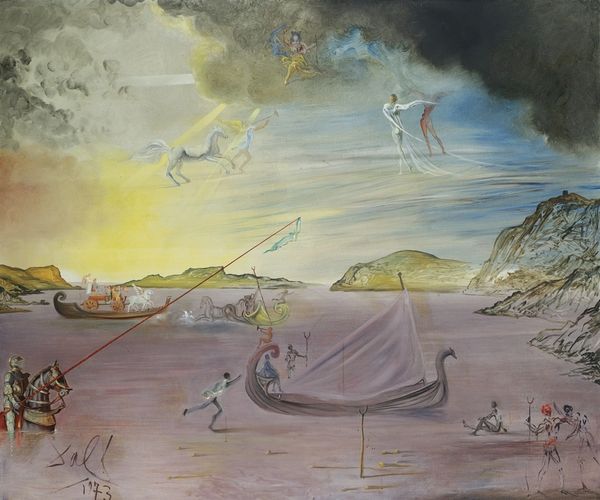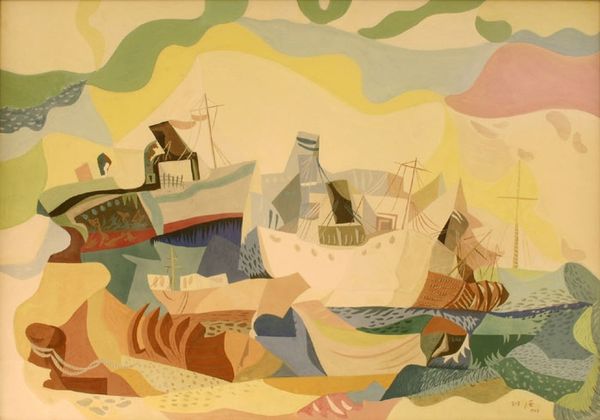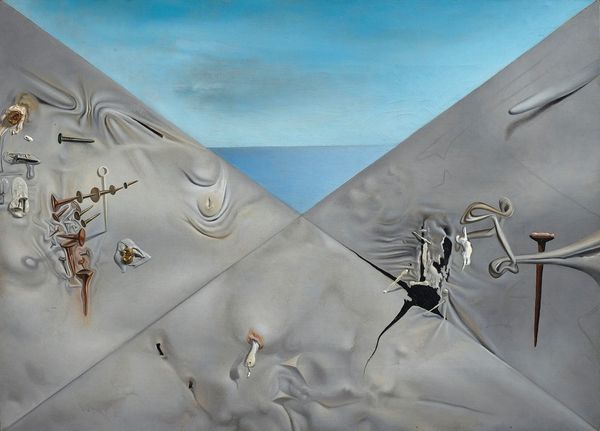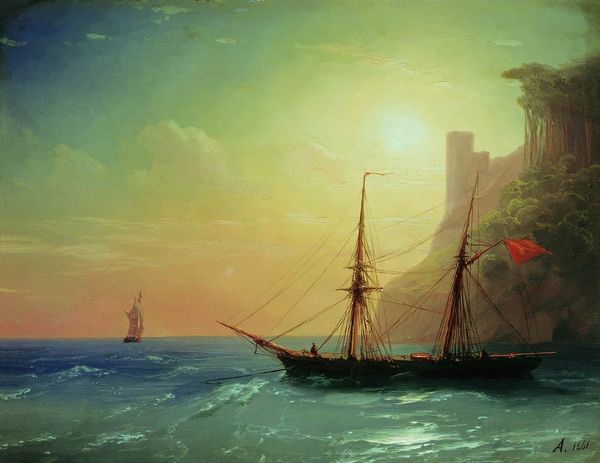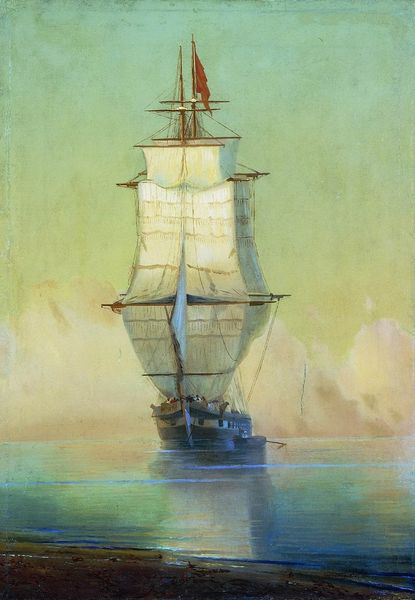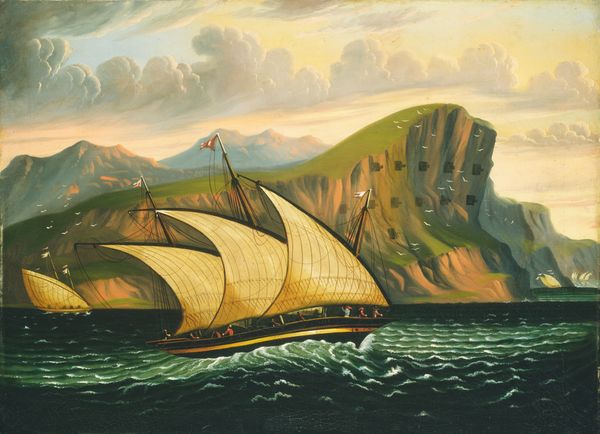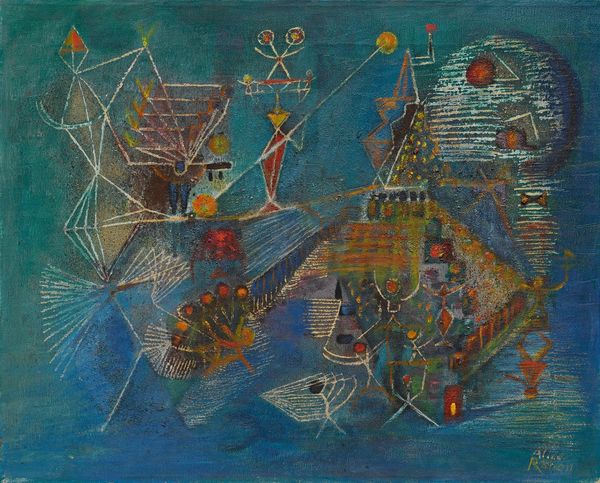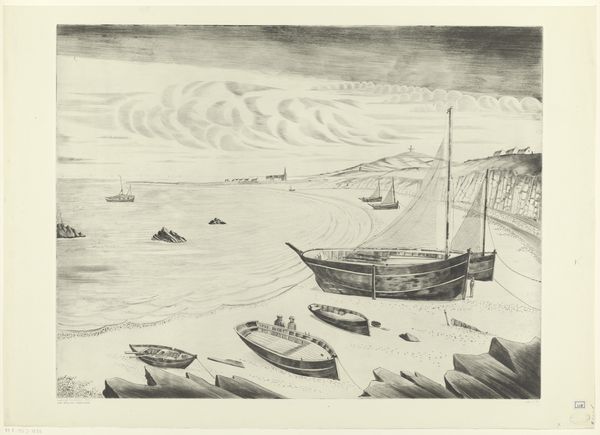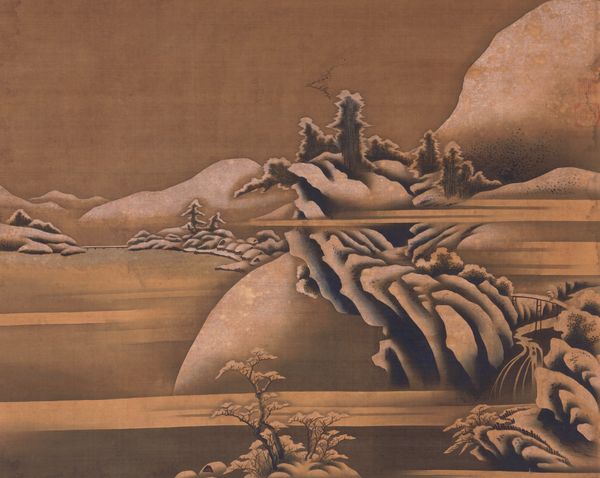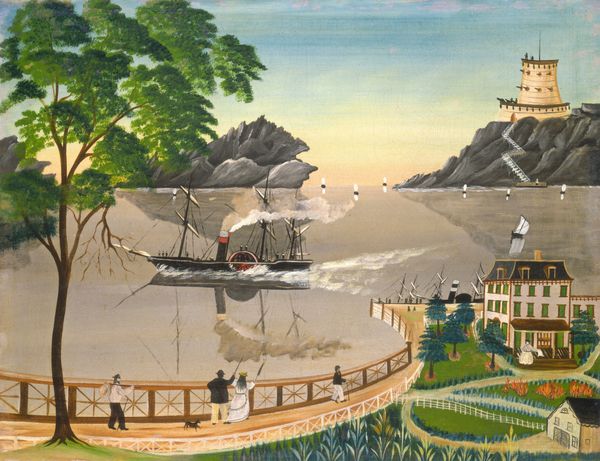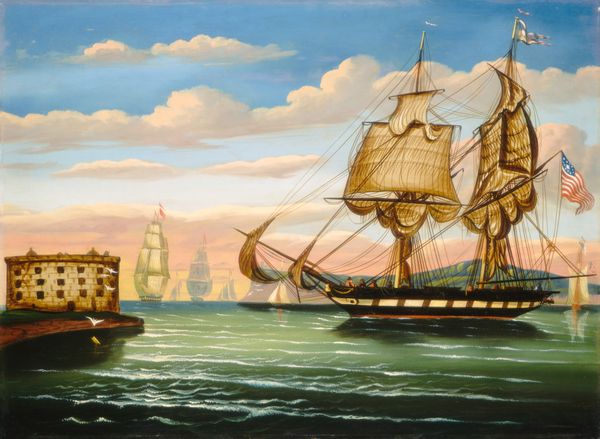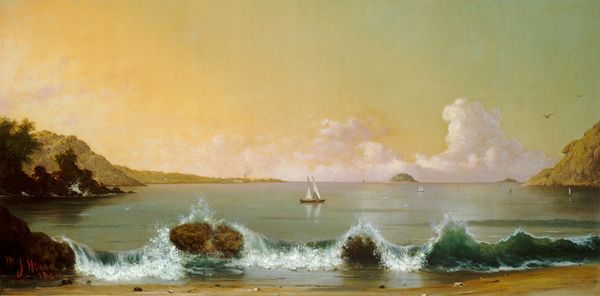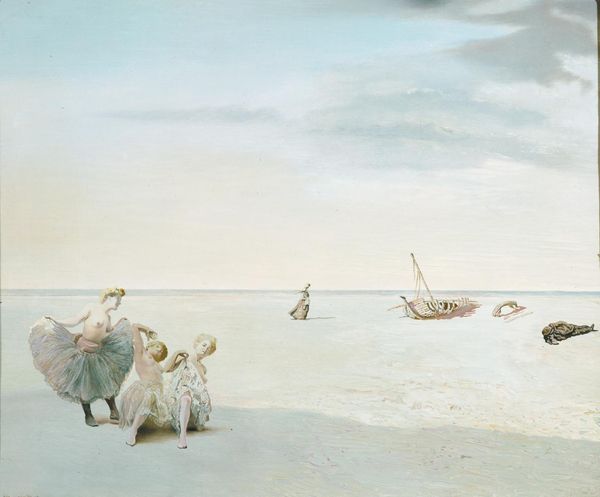
painting, watercolor
#
portrait
#
painting
#
landscape
#
figuration
#
watercolor
#
coloured pencil
#
surrealism
Copyright: Modern Artists: Artvee
Editor: We’re looking at Salvador Dalí’s “Untitled, Sailing Ship in the Bay of Port Lligat” from 1960. It’s a watercolor piece, and it strikes me as a really strange blend of peaceful seascape and, well, some sort of explosion happening in the middle ground! How do you interpret this work? Curator: This piece highlights Dalí’s manipulation of imagery within a specific socio-political context. Remember, this is 1960, the height of the Cold War. Dalí frequently explored themes of nuclear anxiety and scientific advancement, often subverting idyllic or classical imagery with elements of impending doom or societal upheaval. Look at how he contrasts the seemingly serene landscape with the figures engaged in conflict on the beach, not to mention that ambiguous burst in the water. Does it appear more like an eruption or some other phenomenon? Editor: It's hard to tell, but an eruption makes sense given the context. I hadn't considered the Cold War anxieties. So the serene sailing ship, a traditional symbol of exploration and freedom, becomes almost ironic in this light? Curator: Precisely! The sailing ship is itself haunted by the profile silhouette of someone, maybe even Dalí himself, imposing this feeling of uncertainty and looming shadow. He positions himself as both observer and perhaps a subconscious source of tension within the supposedly peaceful setting. The painting uses the familiar artistic language of landscape to actually disturb and unsettle. Editor: That makes so much sense. I initially saw it as a kind of quirky landscape, but thinking about it in terms of Cold War anxiety completely reframes the piece for me. It really shows how even seemingly straightforward images can be loaded with social and political meaning. Curator: Indeed, art is rarely made in a vacuum. Understanding the historical and social forces at play deepens our appreciation of an artist’s choices and intentions. This painting really challenges the idea of landscape as a purely scenic, apolitical genre.
Comments
No comments
Be the first to comment and join the conversation on the ultimate creative platform.
